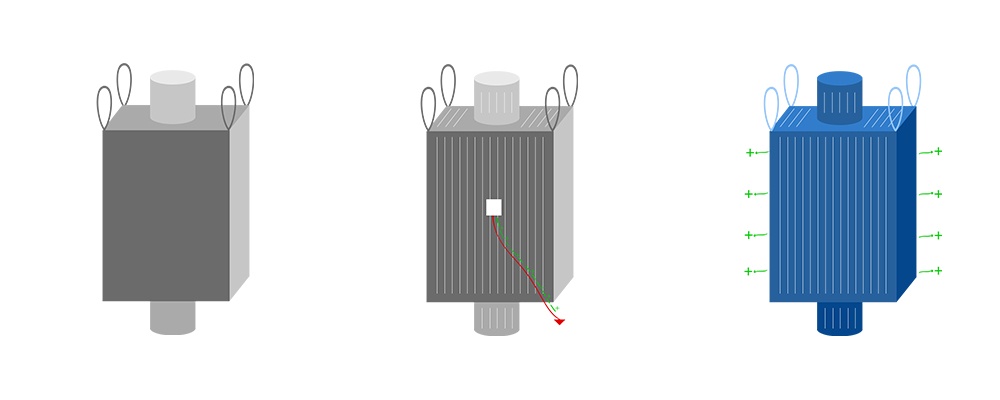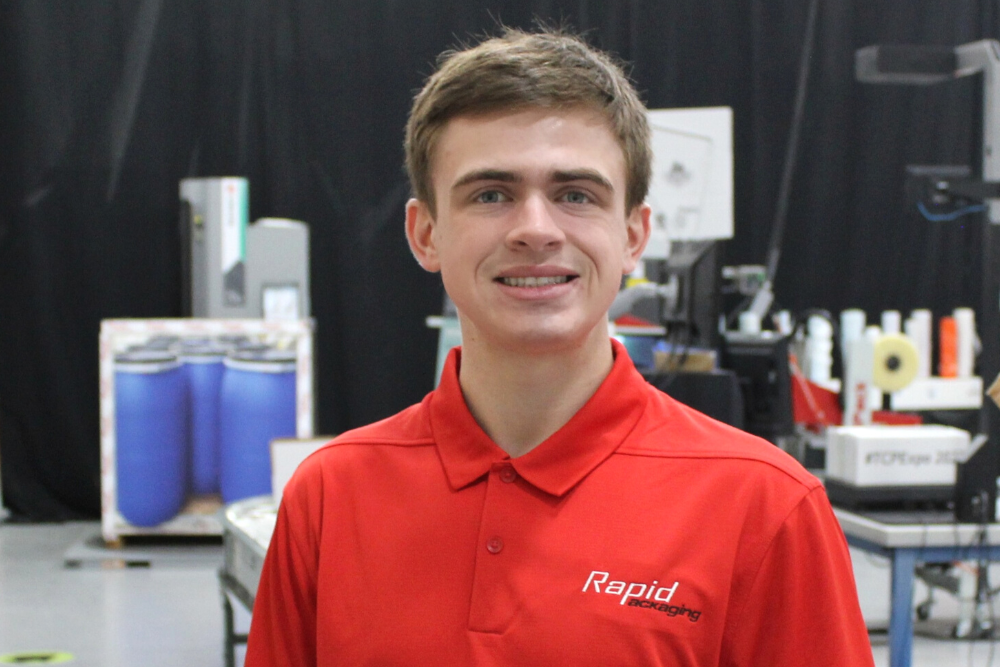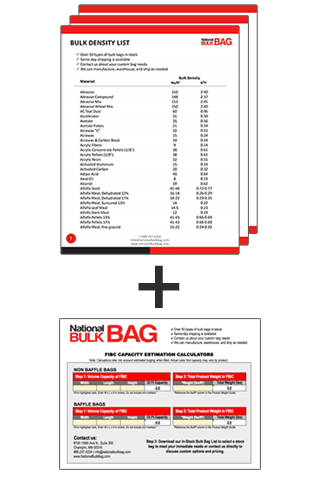Updated: 4-21-2025
When bulk bags are filled and discharged, the movement of finely powdered substances can cause a buildup of static electricity. Properly managing this static electricity is crucial, especially when storing and transporting flammable and combustible products. Let's explore the different types of FIBC bulk bags and how they help mitigate these dangers
Let's examine each type of bag, define both safe and non-safe uses, and determine which types help mitigate the dangers of static electricity when storing and transporting flammable and combustible materials.
Type A FIBC Bulk Bags
 Type A bags are made of plain-woven polypropylene and other non-conductive fabrics. Static electricity is generated as products move over or rub against the inside surface of the bag when they are filled or discharged. Many organic materials and chemicals can form combustible clouds that can be ignited by electrostatic discharges from a type A bag.
Type A bags are made of plain-woven polypropylene and other non-conductive fabrics. Static electricity is generated as products move over or rub against the inside surface of the bag when they are filled or discharged. Many organic materials and chemicals can form combustible clouds that can be ignited by electrostatic discharges from a type A bag.
It is important to remember that type A bags do NOT offer static protection and should NOT be used to store or transport flammable or combustible products.
Safe Uses for Type A Bags:
- Transporting non-flammable products.
- No flammable solvents or gases around the bag.
Do Not Use Type A Bags for:
- Transporting flammable products.
- When flammable solvents or gases are present around the bag.
- Should not be used where a flammable atmosphere with a minimum ignition energy ≤1,000mJ is present.
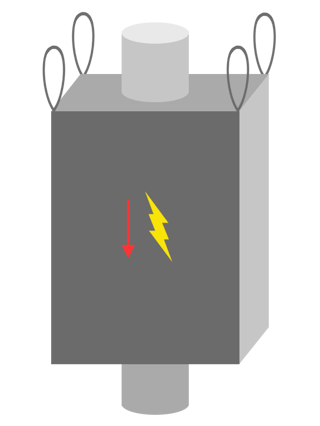 Type B FIBC Bulk Bags
Type B FIBC Bulk Bags
Type B bags are similar to type A bags in that they are made of plain-woven polypropylene fabrics or other non-conductive material. Also like type A bags, type B do not have any mechanism for dissipating static electricity.
Type B bags are made from materials that have a low breakdown voltage to prevent incidents where highly energetic and dangerous propagating brush discharges (PBD) occur. Although type B bags can prevent PBD, they are still not considered anti-static because they do not have a mechanism to dissipate a static electricity charge. For a bag to be considered “anti-static”, bags must have a reliable mechanism for dissipating static electricity.
Aside from the risks of incendiary discharges, there are other consequences associated with not using an anti-static bag, such as a type B bag:
- They can cause electrostatic shocks to operators (although not dangerous, these shocks are very annoying and can cause other accidents).
- Dust and other contaminants can become attracted to the bag's surface.
- It is difficult to fully empty the bag. Static electricity can cause the product to become stuck to the side of the bags.
Safe Uses for Type B Bags:
- Transporting non-flammable products.
- Environments with dust with ignition energies less than 3mJ.
Do Not Use Type B Bags:
- When flammable solvents or gases are present around the bag.
Type C FIBC bulk bags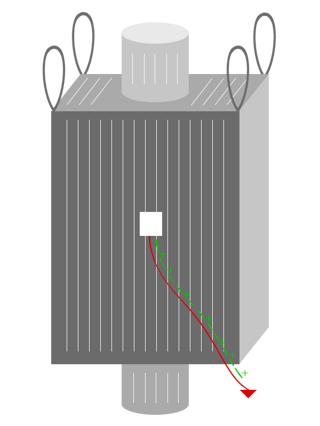
Type C or conductive or groundable bags are made from non-conductive polypropylene fabrics interwoven with conducting threads. These threads must be connected to a designated ground during filling and emptying to safely dissipate static electricity.
As with any operation, ensuring that the type C bag is grounded properly is subject to human error. A proper connection to the designated ground during filling and discharging is imperative to safely using type C bags.
Safe Use for Type C Bags:
- To transport flammable powders.
- When flammable vapors, gases, or combustible dust are present.
Do Not Use Type C Bags:
- When the ground connection is not present or damaged.
- Resistance from any location of the bag to the designated grounding point.
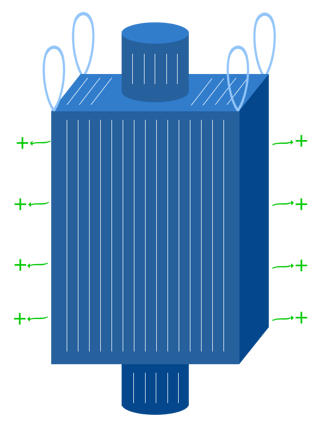 Type D FIBC bulk bags
Type D FIBC bulk bags
Type D bags are made from anti-static and static dissipative fabrics that safely prevent sparks and brush discharges without needing a ground connection. These bags contain quasi-conductive yarns that dissipate static electricity into the atmosphere.
Type D bags, such as Crohmiq™ bags, are manufactured with fabric containing quasi-conductive yarns that safely dissipate static electricity into the atmosphere (as seen in the diagram to the left) via safe, low-energy corona discharge. These quasi-conductive yarns in bags such as Crohmiq™ bags do not need to be interconnected. Using type D bags eliminates the possibility of human error associated with the manufacturing and use of groundable type C bags.
Safe Use for Type D Bags:
- Transporting flammable powders.
- When flammable vapors, gases, or combustible dust are present.
Do Not Use Type D Bags:
- When the bag's surface is contaminated with conductive materials like grease or flammable substances.
Choosing The Right Bag for Your Application
Although Type B bags have some anti-static properties, only Type C and Type D bags are truly safe for storing and transporting flammable and combustible materials. Type C bags require proper grounding, while Type D bags eliminate human error risk with special yarns that dissipate static electricity.
For more information on types of bags, visit the “Types of bags explained” page by clicking here. To speak with an expert to determine which type of bag is right for your application, click here to fill out the “Get Quote” form or just click here to chat with a bulk bag expert today!
Thanks for reading!
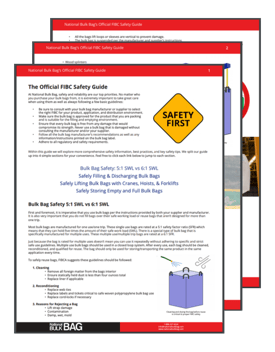 No matter who you purchase your bulk bags from, it's extremely important to take great care of your employees when using them. Within this guide, explore comprehensive safety information, best practices, and key safety tips.
No matter who you purchase your bulk bags from, it's extremely important to take great care of your employees when using them. Within this guide, explore comprehensive safety information, best practices, and key safety tips.
This safety guide is split up into four sections for your convenience:
- Bulk bag safety: 5:1 SWL vs. 6:1 SWL
- Safely filling & discharging FIBCs
- Safely lifting FIBCs with cranes, hoists, & forklifts
- Safely storing empty and full FIBCs
Download the Official FIBC Bulk Bag Safety Guide by clicking the button below!

